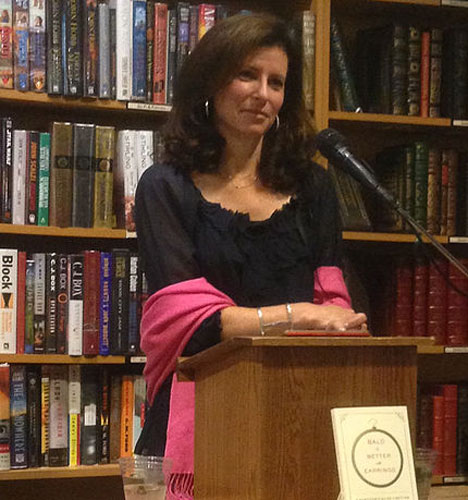
Summary of the book
There are many ‘How-to-survive-breast-cancer’ books that help patients prepare for and deal with the emotional and physical roller coaster that comes with a diagnosis of breast cancer. Andrea Hutton’s book “Bald is better with earrings” is a lovely, friendly, easy to read book that offers tips and tricks to help you feel more in control and ready for what is coming. It offers an insider’s perspective: the author was diagnosed with breast cancer at the age of 41 and she shares information and advice that she wishes she had known before she went through it all.
The newly diagnosed and those going through the diagnosis process of breast cancer will benefit the most from this book. As such, it is a perfect gift for a friend or family member going through breast cancer.
Chapters in the book
The ten chapters of the book talk about diagnosis, treatment, and life after treatment is finished. If some chapters aren’t relevant to your experience, you can skip them. This is a book that you can read as a whole, or dip into as appropriate. The chapters include the following topics:
Testing and initial diagnosis
The first couple of chapters cover suggestions on how to get through the initial diagnostic tests. They address the fear you might feel and the need for support, including the advice to “never go to a mammogram alone,” down to the practical suggestion of “pee right before you go in for this test”. Discussions include how to choose a surgeon and oncologist, as well as how to tell your family and friends (including children) about your diagnosis.
Cancer treatments – surgery, chemotherapy, radiation
Andrea walks us through the finer details of what to expect for the different treatments a breast cancer patient might go through, most of which you will not find discussed in your medical appointments. And, while seeming to be just little snippets of ideas – these small suggestions can make a huge difference.
She gives plenty of information about what to expect after a mastectomy. This includes such things as deciding which side of the car you should sit on to avoid the seat belt digging into your surgical site; details about the “pouch and puff” camisole to wear after surgery (the puff is a pocket filled with stuffing that attaches to the camisole with Velcro, and the pouch is where you put the drain); and how you need a washable waterproof case/fanny pack for the shower to put your drain in, so that it doesn’t pull on the skin.
For chemotherapy, she suggests “take a walk afterwards [chemotherapy]...This is one of the harder things to do, but it makes a huge difference in how you will feel later.” But then she nicely balances this advice with “Be kind to yourself. What you’re going through is really tough”.
Side effects of treatments
She gives helpful hints on losing your hair, wearing scarves, choosing a wig, and protecting your skin during radiation. Not all her tips will work for everyone, but tips such as “Get some Aveda Men Pure-formance exfoliating shampoo...it’s the only shampoo that feels good on a bald head” might be just what you need. She spills the beans so that you realize that losing your hair means more than just the hair on your head – it includes eyelashes, eyebrows, and body hair. She lays it all out for you.
Finding your new normal – sex life, self image, self esteem, and moving forward
Although I felt this was the weaker section of the book, it still prepares the reader for what to consider after treatment is finished, when life is meant to return to a new normal. I was sorry that, to me, the author sounded a little embarrassed talking about sex, and it only gets a brief mention. Rather than the usual tips in the other chapters, this section is more about her experiences – which we could expect, as while the rest of the book focused on getting through standard procedures, this last section is more personal.
Conclusions
What the author does very well throughout the book is to provide warm, caring, serious suggestions, but all the while incorporating her lighthearted style. She respects the seriousness of it all, while managing to create a respectful, caring, honest tone and keeping the mood uplifted. It is like a no-nonsense conversation with a close girlfriend.
Overall, the book is informative, instructive and even entertaining in its own way, although I wish it included an index so it would be easier to find the useful tips again. There is no universal cancer experience - we are all individual and this is one person’s perspective. While you may certainly discard some of the advice and follow other parts, it offers many useful suggestions in one small book that will save you from spending hours scouring the internet.
“Bald is better with earrings” covers the frequent scenarios involved with breast cancer and helps prepare you for them. I would definitely buy this book for a friend or family member going through breast cancer (and I would add a pair of earrings too!).
This book is 244 pages.
Review written by Ruth Baillie, learn more at calmerme.com!

